What will be the efficiency of cycle as shown in the figure.

1→2 and 4→5 are adiabatic process 3→4 and 5→1 are isobaric process 2→3 is isochoric process Q23=10J,Q34=15J
and Q51=−10J
0.45
1
0.6
None of these
η=WnetΔQsupplied×100
Wnet=(∑Q)cycle=10+15−10=15J
ΔQs=10+15=25J
η=1525×100=60% Hence c is correct.
Topper's Solved these Questions
- HEAT AND TEMPERATUREBOOK - FIITJEECHAPTER - HEAT AND TEMPERATUREEXERCISE - COMPREHENSION TYPE
5 Videos
- HEAT AND TEMPERATUREBOOK - FIITJEECHAPTER - HEAT AND TEMPERATUREEXERCISE - ASSERTION REASON TYPE
1 Videos
- HEAT AND TEMPERATUREBOOK - FIITJEECHAPTER - HEAT AND TEMPERATUREEXERCISE - SOLVED PROBLEMS SUBJECTIVE
18 Videos
- GRAVITATIONBOOK - FIITJEECHAPTER - GRAVITATIONEXERCISE - Numerical based Question
2 Videos
- KINEMATICSBOOK - FIITJEECHAPTER - KINEMATICSEXERCISE - NUMERICAL BASED QUESTIONS DECIMAL TYPE
5 Videos
Similar Questions
A gas undergoes cyclic process 1-2-3-4-1 in which 1-2 and 3-4 are adiabatic process 2-3 and 4-1 are isobaric process. If P2P1=k then what will be the efficiency of cycle in terms of k and γ where γ=Cp/Cv.
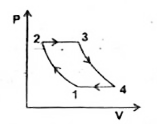
View SolutionA gas is taken through a cyclic process ABCA as shown in, if 2.4 cal of heat is given in the process, what is the value of J ?
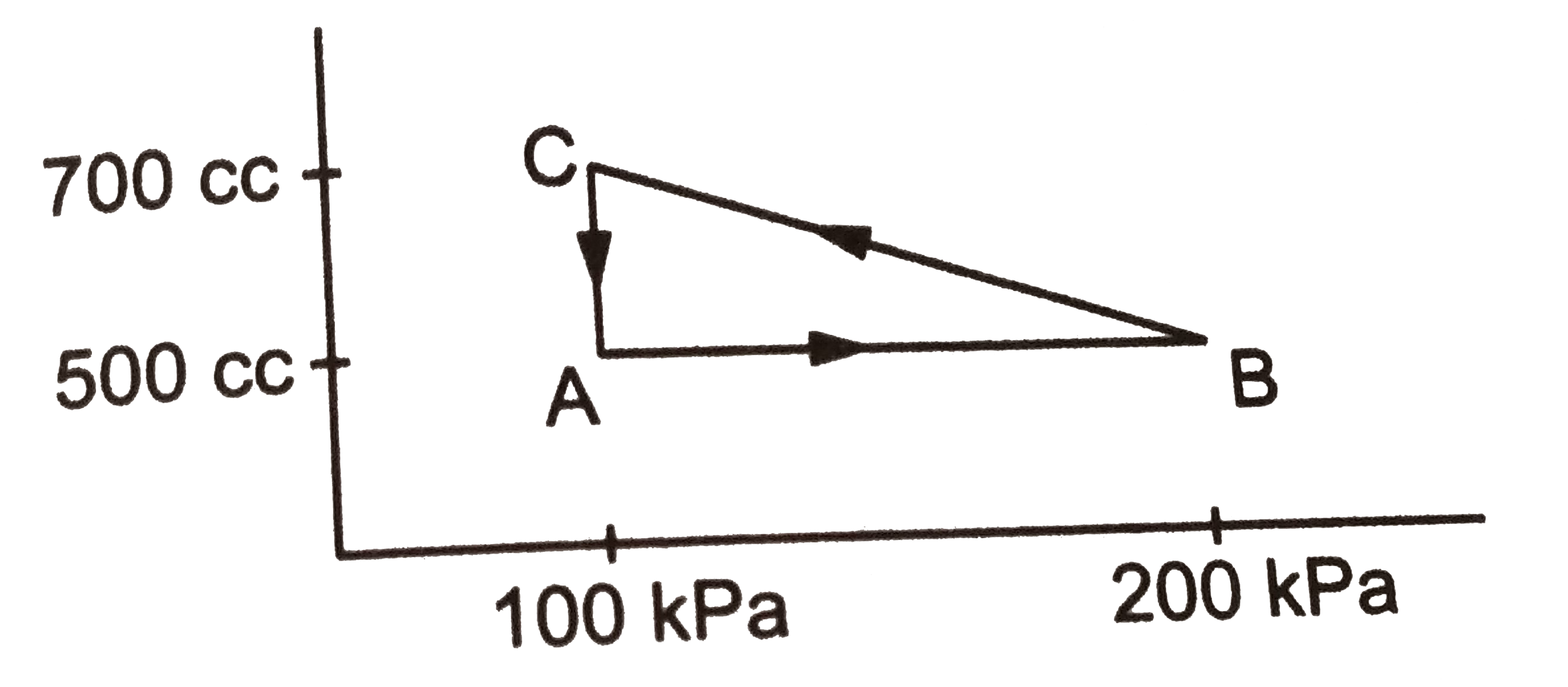
View Solution
Knowledge Check
The three processes in a thermodynamic cycle shown in the figure are : Process 1 → 2 is isothermal, Process 2 → 3 is isochoric (volume remains constant), Process 3 → 1 is adiabatic. The total work done by the ideal gas in this cycle is 10 J. The internal energy decreases by 20 J in the isochoric process. The work done by the gas in the adiabatic process is -20 J. The heat added to the system in the isothermal process is
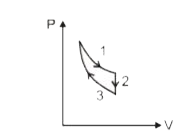 A0JB10JC20JD30J
A0JB10JC20JD30J
A gas is taken through a cyclic process ABCA as shown in, if 2.4 cal of heat is given in the process, what is the value of J ?

View SolutionA gas is taken through a cyclic process ABCA as shown in, if 2.4cal of heat is given in the process, what is the value of J ?

View SolutionCalculation OF deltaH||deltaE||q||W for Adiabatic Process||Isochoric Process||Isobaric Process ||Class Illustrations with Short Tricks
View Solution100 mol of an ideal monatomic gas undergoes the following thermodynamic process as shown in the figure ( P−V or Pressure-Volume plots are shown) A→B: Isothermal expansion B→C Adiabatic expansion
C→D: Isobaric compression
D→A: Isochoric process
The heat transfer along the process AB is 9×104J. The net work done by the gas during the cycle is k×104J. Find k, (Take R=8(~J).(K)−1(~mol)−1 )
'(##CEN_KSR_PHY_JEE_C15_E01_030_Q18##)'
View SolutionA gas has been subjected to a cycle of isochoric, isothermal process 1-2-3-4-1 as shown in the figure. The graph for this cycle on P-T diagram is
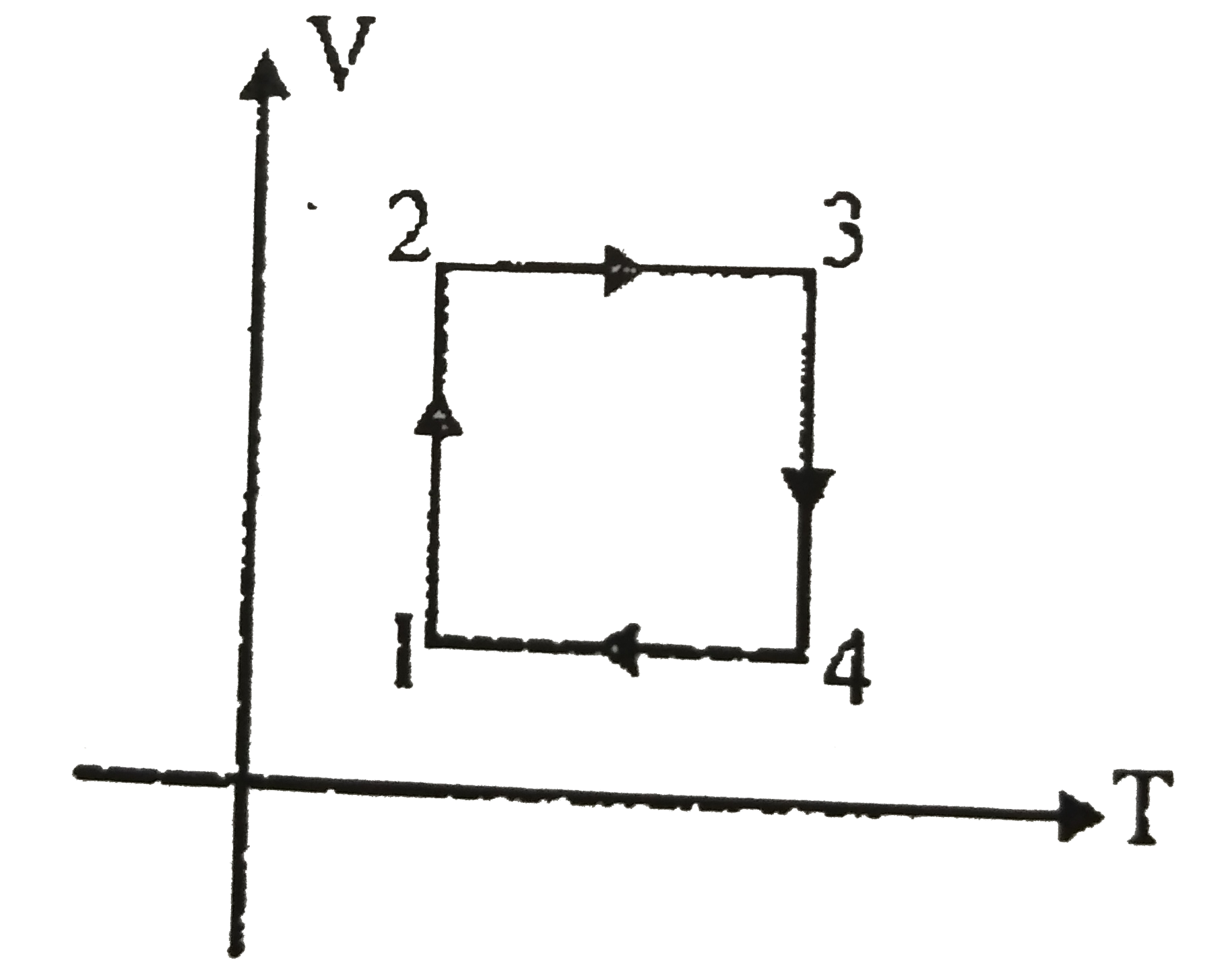
View Solution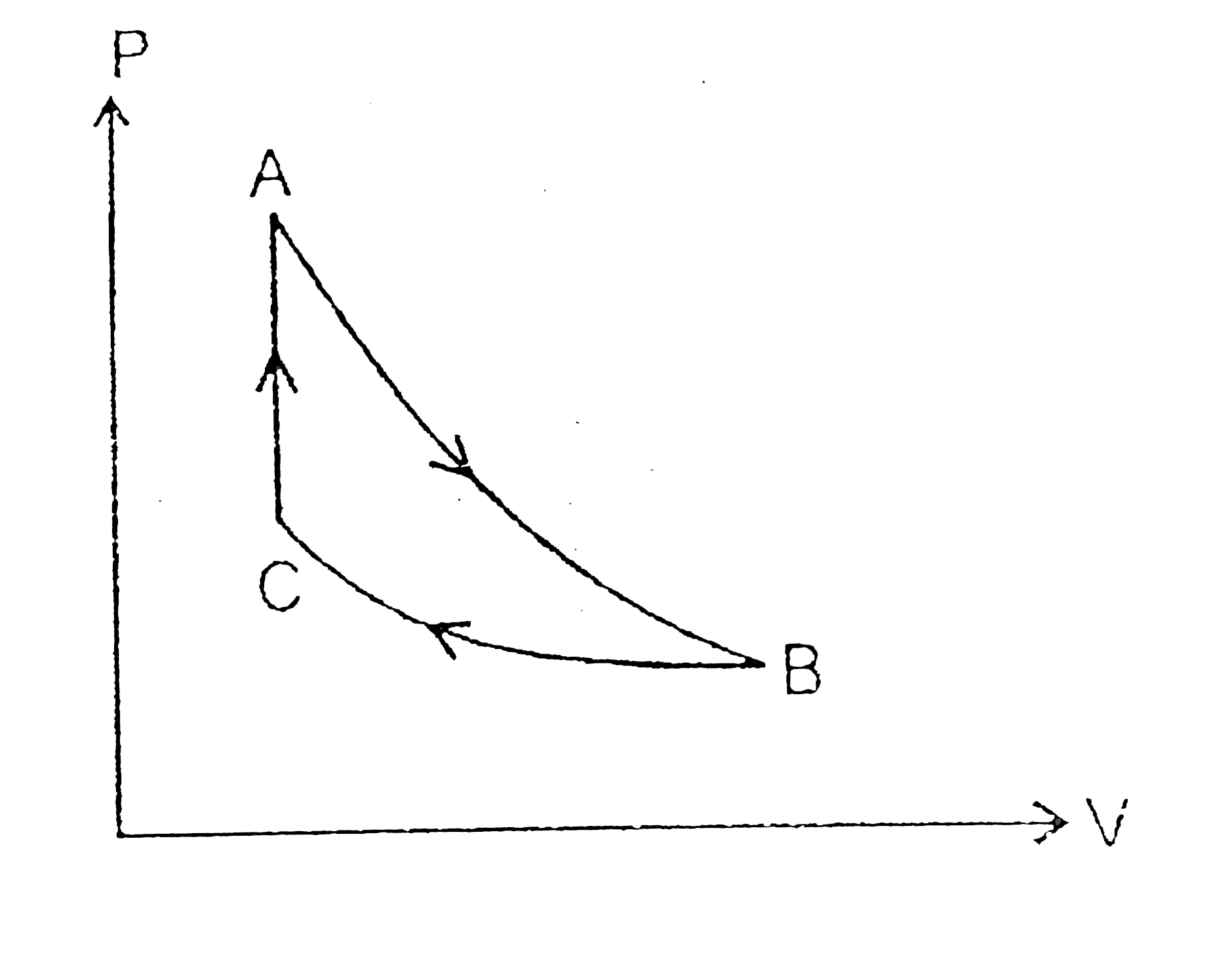
An ideal gas undergoes a cyclic process, in which one process is isochoric, one process is isothermal and one process is adiabatic. During the isothermal process, 40 J heat is released by the gas, and during the isochoric process, 80 J heat is absorbed by the gas. if work done by the gas during adiabatic process is W1 and during isothermal process is W2 then the magnitude of W1W2 will be equal to:
View Solution
An ideal gas undergoes a cyclic process, in which one process is isochoric, one process is isothermal and one process is adiabatic. During the isothermal process, 40 J heat is released by the gas, and during the isochoric process, 80 J heat is absorbed by the gas. if work done by the gas during adiabatic process is W1 and during isothermal process is W2 then the magnitude of W1W2 will be equal to:
View Solution
